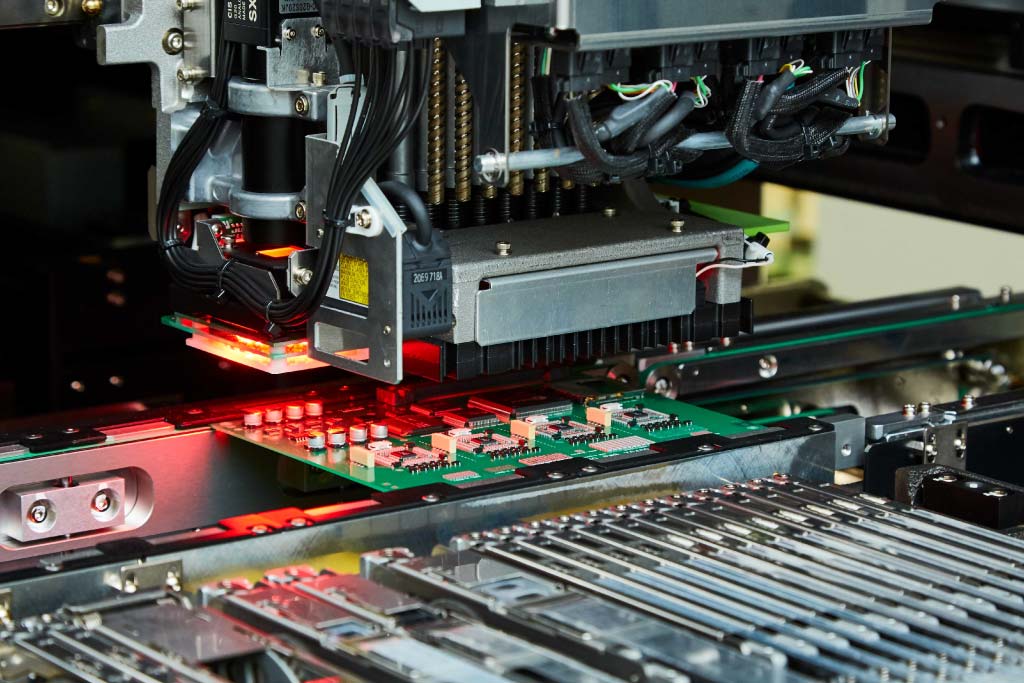The full form of SMT is Surface Mount Technology, it has revolutionized the electronics manufacturing industry, offering a compact, efficient, and reliable way to assemble electronic circuits. In this article, we delve into the world of SMT electronics, exploring its components, assembly process, applications, challenges, and future trends.
What is SMT (Surface Mount Technology)?
Advantages of SMT
SMT is a method of assembling electronic circuits where the components are mounted directly onto the surface of printed circuit boards (PCBs). This eliminates the need for leads or wires, allowing for smaller and more densely packed circuit designs. Some advantages of SMT include higher component density, reduced size and weight of devices, improved electrical performance, and cost-effectiveness in high-volume production.
Evolution of SMT in Electronics Manufacturing
SMT has evolved significantly since its inception in the 1960s. From the early days of hand soldering components onto PCBs to the current automated assembly lines, SMT has become the standard in electronics manufacturing. Today, it is used in a wide range of applications, from smartphones and laptops to medical devices and automotive electronics.

Components Used in SMT Electronics
SMT technology utilizes a variety of components that are specifically designed for surface mounting. Some common components include
- Resistors- These components are used to limit the flow of electric current in a circuit.
- Capacitors- Capacitors store and release electrical energy, providing filtering and energy storage functions.
- Integrated Circuits (ICs)- ICs are the heart of many electronic devices, containing multiple electronic components in a single package.
- Diodes- Diodes allow current to flow in one direction only, essential for rectifying AC to DC current.
SMT Assembly Process
The assembly of SMT electronics involves several key steps
- PCB Preparation- The PCB is prepared by applying a solder paste stencil onto its surface.
- Solder Paste Application- Solder paste, a mixture of tiny solder particles and flux, is applied to the PCB using a stencil.
- Component Placement- Automated pick-and-place machines precisely place the SMT components onto the solder paste on the PCB.
- Reflow Soldering- The PCB is then passed through a reflow oven, where the solder paste melts, creating a strong bond between the components and the PCB.
Types of SMT Packages
SMT components come in various package types, each suited for different applications. Some common types include
- Chip Packages- Small, rectangular packages suitable for resistors, capacitors, and small ICs.
- QFN Packages (Quad Flat No-Lead)- These packages have a flat bottom and no leads, offering excellent thermal and electrical performance.
- BGA Packages (Ball Grid Array)- BGA packages feature solder balls arranged in a grid pattern on the bottom of the component, providing a high-density interconnect solution.
Applications of SMT Electronics
Consumer Electronics- SMT technology is prevalent in consumer electronics such as smartphones, tablets, TVs, and gaming consoles. The compact size and high performance of SMT components make them ideal for these devices.
Automotive Industry- In the automotive industry, SMT electronics are used in vehicle control systems, entertainment systems, navigation units, and safety features. The reliability and durability of SMT components make them suitable for the demanding automotive environment.
Medical Devices- Medical devices rely on SMT electronics for their compact size, precision, and reliability. From patient monitoring systems to diagnostic equipment, SMT technology plays a crucial role in modern healthcare.
Challenges in SMT Assembly

Miniaturization
As electronic devices continue to shrink in size, SMT assembly faces the challenge of placing and soldering tiny components accurately. Advanced machinery and precise techniques are required to handle these miniature components.
Thermal Management
SMT components generate heat during operation, requiring effective thermal management to prevent overheating and ensure reliable performance. Proper design considerations and heat dissipation techniques are essential.
Inspection and Quality Control
Ensuring the quality and reliability of SMT assemblies requires thorough inspection and testing processes. Automated optical inspection (AOI) systems and X-ray inspection are commonly used to detect defects and ensure solder joint integrity.
FAQs about Surface Mount Technology (SMT)
What is Full Form of SMT?
SMT stands for Surface Mount Technology.
What are the advantages of using SMT?
SMT offers several advantages, including higher component density, reduced size and weight of devices, improved electrical performance, and cost-effectiveness in high-volume production. It also enables automated assembly processes.
What are some common components used in SMT electronics?
Common components used in SMT include resistors, capacitors, integrated circuits (ICs), diodes, and various types of semiconductor devices. These components are specifically designed for surface mounting.
What is the SMT assembly process like?
The SMT assembly process involves several steps, including preparing the PCB, applying solder paste, placing components using pick-and-place machines, and reflow soldering. This process ensures a strong bond between components and the PCB.
Where is SMT technology commonly used?
SMT technology is widely used in various industries, including consumer electronics (such as smartphones and laptops), automotive electronics, medical devices, and industrial equipment. Its compact size and reliability make it ideal for modern electronics.
Feel free to ask more questions if you have any!

Bottomline
SMT electronics have transformed the landscape of electronic manufacturing, enabling the creation of smaller, more efficient, and reliable devices. From smartphones to medical implants, SMT technology plays a pivotal role in modern technology. As the industry continues to evolve, advancements in SMT assembly processes, component design, and materials will drive innovation and shape the future of electronics.
